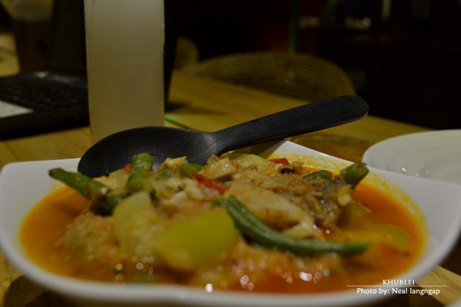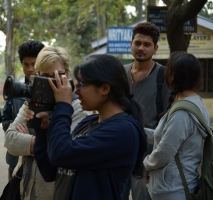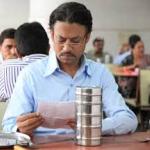Rakesh Sharma, Journalist, Imphal
In Highway 39 you wrote some satirical lines about ‘national integration though cultural exchange’ in the context of Manipur. Bank balance minus dignity does not help, it has been proven in Manipur. But the home ministry continues to see the disease in Manipur as something that arose from lack of money (or industry, production, output, etc). Is there no sincere attempt to solve the problem at a political level? Or the attempt should align only with the interest of the ruling party in the centre -- for example, how Indira Gandhi sabotaged a regional government there using the IB -- in the process losing sight of the local priority?
Also, the demand for sovereignty by valley based armed groups no longer holds currency. Stronger CI ops, border fencing and perhaps a political change in the centre after 2014 will make their life more difficult. Even if the valley groups do not budge from their stand, in some years they will be crushed by the protracted CI strategy of the GoI. It is difficult to get support from Myanmar, Bangladesh and China, and will become tougher every passing year. The number of people who wants to join the underground is decreasing, money leakage is getting sealed and people are impatient with peace and development.
In this environment, what do you think will be the next move of the valley insurgents?
Lastly, I quote from an online forum on Manipur, if you look at the recent demand by Meiteis to be included under SC/ST tag, the premise of insurgency is clearly sovereignty as a major issue coming in the way. Both sides, insurgents and GoI, will not compromise on real sovereignty. But ST status with being a tribal state offers a very likeable middle ground for both sides; a special autonomy amended will play a big role in soothing the insurgency call. The GoI also does not lose its face of a cessation. If you are studying the ULFA peace talks, such models are being floated and being agreed upon. Manipur cannot afford another 50 years of conflict, whether justifiable or not.
Your thoughts?
Sudeep Chakravarti: Dear Mr Sharma, I can’t of course speak on behalf of the Ministry of Home Affairs (!), but my personal opinion is that the problems in Manipur have not festered on account of lack of money. Central funds have been poured into Manipur hand over fist for decades, not only for purposes of security operations but also for the state’s development. The rotten civic, socio-economic and industrial infrastructure in Manipur is a result of vultures from the political security and rebel establishments leaching such funds for their own ends and edification. Indeed, I am stunned that people of Manipur don’t take to the streets to protest the terrible thefts that have been perpetuated—are being perpetuated—in their name.
The problems of Manipur fester on account of lack of political attention from New Delhi. And, it must be said, from the client government in Manipur. It’s a symbiotic relationship that appears to suit the Congress in both Imphal and New Delhi. Even if this were to change, that is, a BJP-led coalition were to come to power in 2014, I’m not sure if the situation on the ground in Manipur would change dramatically on that score. The previous NDA government’s record with regard to Manipur is hardly anything to write home about; and the clumsily-worded ceasefire agreement with NSCN-IM was proof of how little they understood local dynamics.
This, then, is a matter of perceptions changing. I believe that has begun to happen, not on account of the interests of Manipuri people, but because Manipur needs to be at peace if India’s ambitions in Southeast Asia are to succeed, and if India has a hope of balancing China’s ambitions in the mutual backyard, as it were.
But whatever the reason, if greater recognition of, and respect for, Manipur is the result, it is a good thing. Because positives have a tendency to build on positives, to create a virtuous cycle instead of a vicious cycle of which Manipur has for so long been a victim. For instance I think it will be wonderful of Manipur were to be linked with railways: it will dramatically change the dynamic of the state. If that railway in some years is linked to so-called Mainland India passing through Bangladesh, it can transform Manipur and the southern regions of Northeast India. There are so many other examples.
Such developments will also help to reduce the government of India’s arrogance. And I can only hope that breaks the stranglehold of the intelligence, security and bureaucratic establishments, which seem to see Manipur as personal fiefs.
As to your point about rebels, I agree that at this point a battle of attrition will ultimately grind down various rebel groups, specifically those that are termed by government as Valley Based Insurgent Groups. Recent surrenders, memoranda of understanding for ceasing conflict, and arrests already point to that direction. And you have correctly pointed out that reducing sanctuary in Bangladesh and Myanmar has severely affected such groups.
To my mind Valley-based groups have two key options. One is to sue for peace. The other is to form active alliances to keep the rebellion going. To that end I won’t be surprised if pro-talks groups from the two key groups begin to engage with government. Of course, anti-talks groups may continue with war, but with splits that inevitably arise from such moves, it will make it easier for counter-insurgency operations to mop them up in the field, and put even greater pressure to sue for peace.
So they are between a rock and a hard place, especially as rationale for rebellion is, as you mention, has dramatically reduced.
But I would like to see how the state and central governments deal with rebels once they come above ground. Holding people in camps is at best a temporary solution, a strategy to cool temperatures. But rebels need to be reintegrated into society. And for that to work properly, political maturity and accommodation is required. And perhaps, most importantly, the root causes of rebellion need to reduce; be replaced with sold socio-economic and socio-political development. Or else peace will go nowhere.
In this context, I am not so sure that according Scheduled Tribe status for Manipur is the answer—I mean, is the purpose here economic security or a reclaiming of history and dignity? And perhaps more than New Delhi, it will be for the current constituents of Manipur to agree to common grounds for such a status. According entire Manipur special status may be one way out. The Meitei, Naga, Kuki and other ethnicities must work a deal for any real autonomy to work for Manipur as a whole. Another way is special status for Imphal Valley and also the hill areas—so you have a confederacy of regions each with special status. Such things should become clearer in the next two to three years. The fact that such matters are being raised locally signifies that the process of dialogue may have already begun. Now it is important to ensure the spoilers are kept in check.
If you have questions for Sudeep Chakravarti, mail them to editor.ttpmag@gmail.com)
Also read:







































